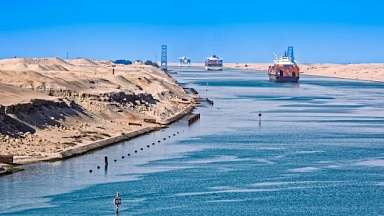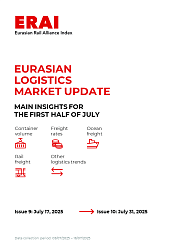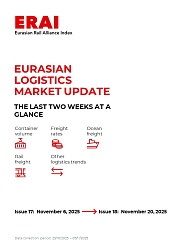Ocean freight’s ‘perfect storm’ continues to rage on the Asia-Europe trade lane with the severe shortage of HGV drivers now a growing, exacerbating factor in the import supply chain, according to one UK-based forwarder, who said the container haulage situation is now of even more concern than finding Asia-Europe capacity.
«Space on the Far East westbound into Europe is still at a massive premium. Getting hold of equipment — 20-foot, 40-foot containers, high cubes and now even non-operational reefers — remains extremely difficult, given the widespread displacement and non-restitution,» Cory Brothers’ group marketing and procurement manager, Mike Bowden, told Lloyd’s Loading List in an interview.
«Overall, shipping costs continue to increase, albeit at a slower rate than what we were seeing earlier this year. So, I suppose we can take some comfort in the fact that the market environment hasn’t got significantly worse; but it certainly hasn’t got any better either. And now container haulage is giving us a major headache too.»
Some potential relief on the ocean rates front came recently with CMA CGM announcing that it was going to suspend any additional rates increases; but Bowden played down the impact of the move.
«Obviously, it’s good news that their rates will not increase over a certain period; but they’re not going to become any cheaper — so, for the marketplace, this does not amount to a great deal. We still can’t get space on vessels or get container equipment to put on those vessels.»
He continued: «While flatlining rates doesn’t really mean much in the current context, I think what the forwarding community was hoping for was that the other carriers would do likewise. However, in fact some of them have continued to increase their prices. This might not be on their base freight rates, but they’re certainly increasing things like the peak season surcharge — even though we’ve been in ‘peak’ mode since the start of the year — and other surcharges.»
Offering his explanation of CMA CGM’s decision to freeze rate rises, Bowden noted: «I could be well off the mark here, but it must be their way of dealing with the backlash that will come their way once this situation turns. And they are probably feeling now that they have to do something about the growing sentiment (among customers) towards all carriers on the Asia-Europe trade lane —specifically that they cannot continue to justify these incredible rate levels, despite the fact that it is due to supply and demand.
«Maybe they’ve realized that enough’s enough in terms of their profit margins and that they’re not going to bite the hand that’s feeding them right off. Who knows?»
Customers suspend shipping operations
Back in July, Cory Bros. had highlighted that with rates on the Asia-Europe lane reaching US$18,000-20,000 for a 40 foot container, large numbers of importers were now making losses on goods imports at the current prices.
«A couple of months on, we have several customers (in the consumer products vertical in particular) who’ve taken the step to suspend shipping operations having come to the conclusion that the value of their goods cannot be balanced with the cost of importing and getting them delivered to their warehouse. And we have others who are saying that they are successfully passing on the rises in their unit costs but they don’t expect this to last as the negative feedback from customers is increasing and this will ultimately hit sales.»
Bowden revealed that it was already some time ago that the company began informing customers that there could be no guarantees goods would get through for them to be on the shelves before Christmas given the ongoing difficulties in ocean freight logistics.
«We’ve been really upfront with customers and said, ‘These are the facts with regard to schedule integrity, the availability of vessels and shipping costs, and there’s also the risk of ‘flip-flopping’ — where you might agree a rate, you might agree the vessel, only to be told at the last minute that the shipment is going to be delayed. This is the landscape and here’s what we can and cannot do. You need to be prepared and we are forewarning you that there is going to be additional demand before Christmas in a marketplace that has already reached saturation point. So please expect delays and to think that you will get all of your product here when you start shipping some of it in late-September, early-October may not be realistic in this market.’ That’s been our message and remains so.»
Container haulage costs ‘more than doubled’
Meanwhile, a severe shortage of HGV drivers in UK has added to the woes of shippers and forwarders Bowden underlined, bringing further disruption to the import supply chain.
"Everyone is well aware that we are 100,000 drivers down in the UK. The road freight industry has been contracting for some considerably time and Covid-19 and Brexit has speeded up the process by at least three or four years — and this is now having a very dramatic effect on container haulage.
"Our planning, usually undertaken months in advance of shipment dates, has been turned on its head. Container haulage costs have more than doubled in most cases and the situation is worsening by the day.
Bowden continued: «For example, let’s say we have an urgent container which despite all the disruption to ocean freight logistics we’ve managed to get to the UK, to the port of Southampton, and it’s just got to go to Manchester to complete its journey.
«But the haulage company gets in touch to say that they can only handle it in three weeks’ time. Now that container is free ‘in port’ for five days. After five days, it’ll be charged quay rent and demurrage. So, I’ve got to turn round to my customer and say that the Manchester run, which was priced at £420 three months ago, is now £900 — just for the road haulage. It’s also going to have £1,000 worth of quay rent and demurrage on it — at best. And that’s one of 50 containers the customer has got!»
He continued: «These are the facts; and it’s happening every day. Some hauliers will tell us they’re not doing these truck runs any more or that they are not in a position to do them because of a shortage of drivers. Or they’ll reply, ‘yes we can do it, but just to let you know the shipping line is now saying we can’t bring containers back to the quay because of congestion issues. So, the empty’s now got to go to Lowestoft on the other side of the country and it’s going to cost you another £500 on top of what it would have cost to return it to Southampton.’
«The container haulage situation is now of more concern to us than getting the box from Asia to the UK.»





